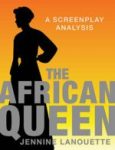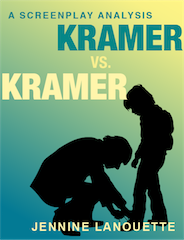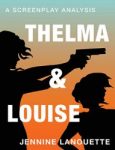Analyzing the Masters
(Not for the Neophyte)





Increase Your Narrative Instincts
Through Deep Study of Great Films
When you engage in deep analytical study of the great films — the ones know to have resonated strongly with audiences — their master seeps into your unconscious and forms your creative instincts. While you are consciously learning about abstract story structure principles, you are also absorbing the illustration of how those principles apply in a masterful work. Through concrete example, the new knowledge becomes embedded in your creative unconscious. The next time you’re working on your own script and you come up with a new idea, you will more easily “know” if it’s worth pursuing or not. You’ll more readily dismiss the bad ideas and you’ll have more confidence in the ideas that strike you as good.
With this course, you will also receive these bonuses:
- A half-hour consultation on a one-page synopsis of your script ($200 value).
- A 25% discount on a full script consultation ($200 value).
- The chance to win a free script consultation ($800 value).
- Free access to my media-rich digital books ($75 value):
Course Details:
Six Weeks Beginning Dec. 4th, 2020
Live Q&A Fridays 12:00 noon – 1:00 pm PST
$645
About Me:
 I am a screenwriting instructor and story consultant, having trained under Frank Daniel in Columbia University’s Film Division with additional coursework in the history of drama at NYU. In addition to teaching many screenwriting workshops, I have also lectured on script analysis at schools such as The New School and School of Visual Arts in New York, as well as production companies such as Pixar and Lucasfilm in the San Francisco Bay Area.
I am a screenwriting instructor and story consultant, having trained under Frank Daniel in Columbia University’s Film Division with additional coursework in the history of drama at NYU. In addition to teaching many screenwriting workshops, I have also lectured on script analysis at schools such as The New School and School of Visual Arts in New York, as well as production companies such as Pixar and Lucasfilm in the San Francisco Bay Area.
Questions about the course? Email me: jennine@screentakes.com
Here’s a short FAQ to help you know more about how this course can serve you:
Why analyze films? When I work with students and clients helping them develop their screenplays, I do my best to explain why this or that choice will better serve a particular scene or the overall structure. Then I hope they will carry that story principle forward into the rest of their work. But I often see them struggling to do so. Overtime I have come to understand the reason why: They have not yet developed their narrative instincts.
What are narrative instincts? If I explain a story principle to you, you will have an intellectual knowledge of it. But when you go to apply it, you have to think about it. If, on the other hand, I can help you have an instinctual knowledge of that story principle, you don’t have to think about it. You do it automatically. You make a good choice because it feels right. Then you might think about why it feels right and how it could be made better. This is the conscious/unconscious dance that is the creative process. We have all been taught to value our intellectual capacities. But, in the creative process, what is more important is your ability to make a good choice because it feels right. That capacity is determined by your narrative instincts.
How will narrative instincts help my writing? It’s a long and complicated road to writing a good screenplay. It takes many drafts, a lot of trial and error and much putting it in front of people to see how they respond. But you can help yourself on that journey by cultivating your own inner compass to help guide you. With well-developed narrative instincts, you will know on a gut level whether a new idea bubbling up from your unconscious is worthy of pursuit. You will know your story needs to speed up here, slow down there, take a new turn or cut to the chase. You will still need to put it in front of people for feedback, but when you hear their responses, you are more likely to have an instinctive idea how to solve the problems.
How do I develop narrative instincts? It is widely held that by watching many, many movies or reading stacks and stacks of scripts, the art and craft of those works will seep into your unconscious and inform your work. To some degree, that’s true. But passively watching and reading will only get you so far. The more effective way to inform your work with art and craft is to engage in active study of the masterful films. In an odd twist, it takes conscious effort to enrich your unconscious knowledge so your effort need no longer be conscious. Like when learning to play the piano and you have to think about where to put your fingers until it becomes automatic and you don’t have to think about it anymore.
How do I engage in active study of the masterful films? Here’s where I can help you develop your instinctual knowledge of story principles. In my online course Analyzing the Oscars, we will immerse ourselves in the story structure, character and thematic elements of the five of the 2020 Best Screenplay Oscar nominees (including the two winners) listed above.
______________________________________________________________________________________
How to Analyze Films
Here are some musings on how I analyze story structure to give you an idea of what to expect in the course:
The difference between craft and art. We need certain structural elements to be in common to be able to follow the story. This is the craft. But we also enjoy it when structural elements depart from common practices to create a unique meaning. This is the art. There is the conglomeration of the parts (the craft) that somehow creates a whole that is greater than their sum (the art). These are some avenues I have come to rely on for getting to a film’s artistic uniqueness — cohesion, layers, patterns, metaphor and theme.
Cohesion. When a painter talks about cohesion, they talk about the border. How do you work off the edge of your canvas? What do you put in? What do you leave out? A film exists in time. It has to invite us into the story in the beginning (point A) and it has to come to a satisfying ending (point B). Those are the borders in film. How we get from that point A to point B to achieve cohesion is determined by the film’s structure. One of the first things I look at is what is the point A and point B of the story.
Layers. To have lasting appeal, a film must have multiple layers of meaning, but not all layers are perceived consciously. It is your unconscious perception that determines whether you leave the theater feeling satisfied or disappointed. Then it falls to your conscious mind to explain to your friends why you hated the movie so much. Most of us lack an ability to fully articulate that, resorting to sulking generalizations like, “It sucked.” Conscious articulation of the unconsciously absorbed layers is what I’m striving for when I analyze a film’s story.
Patterns. I get my clues to a story’s meaning by translating this time-based medium into graphic elements on a timeline chart. Then the patterns start to emerge. Sometimes I find a little three-act structure sequence within the larger structure. Sometimes it’s a couple of story threads moving in parallel. Sometimes it’s a cluster of similar scenes in either a remarkable symmetry or a telling imbalance. Then I look at how these identified patterns are serving, supporting or enhancing the meaning of the story.
Metaphor. In the end, what the unconscious mind loves best is to get meaning through metaphor. Happily, the creative unconscious also loves to communicate that way. So the search for cohesion, layers and patterns is a way to crack the code of metaphoric communication going on between the unconscious of the artist and the unconscious of the viewer. How dull life would be, how drearily literal, how monochromatic and robot-like, if we didn’t have metaphor for putting abstract ideas and feelings into concrete communicable form.
Theme. The ultimate goal, of course, is to create a Larger Meaning. While pure plot will tell a story with little meaning beyond the sensational events on screen and character will add some insight into human nature to the thrills and chills, putting the two together to create a metaphor brings the potential for the concrete embodiment of larger ideas. Thus, a thematic story emerges, in parallel with the plot and character stories.




